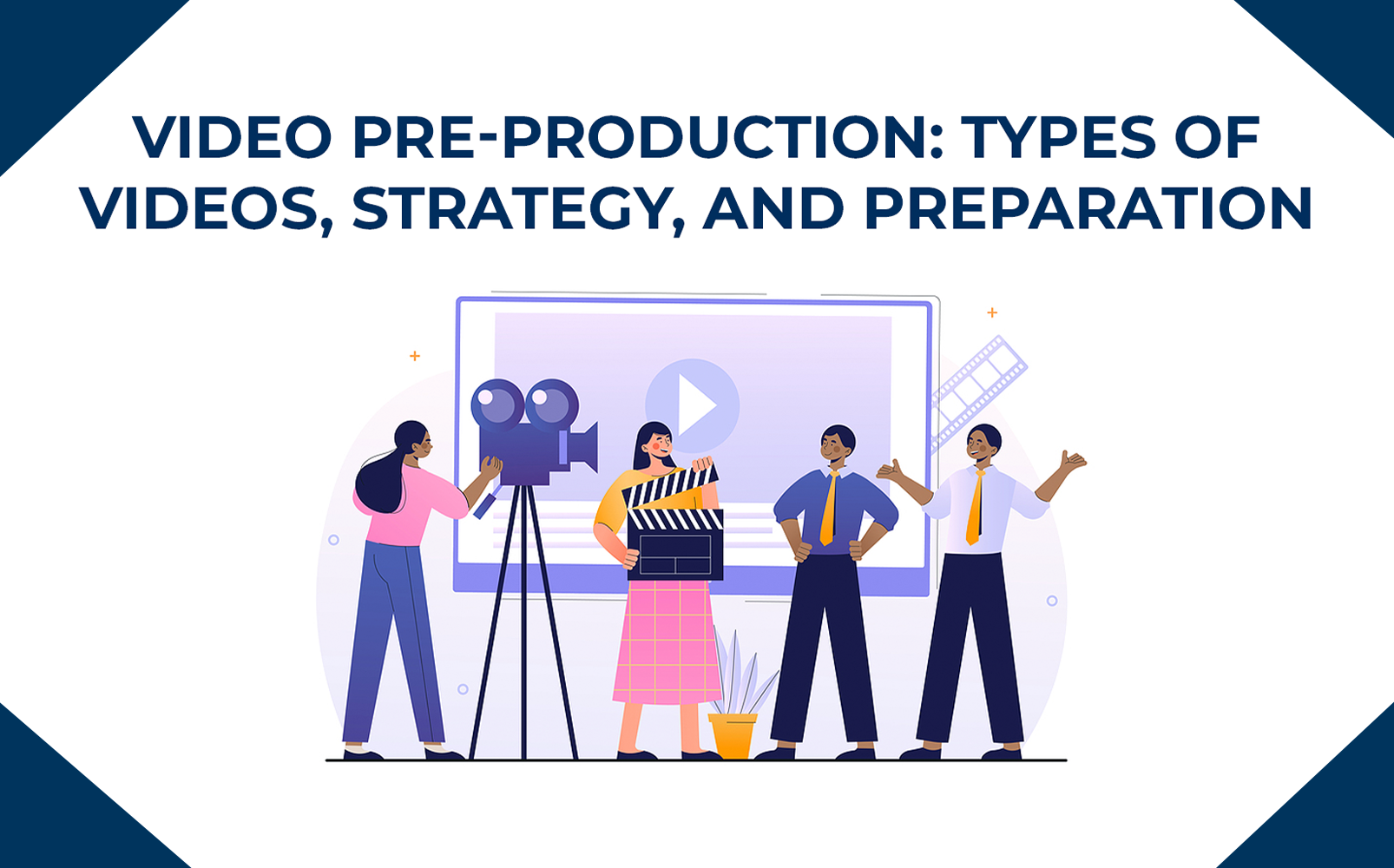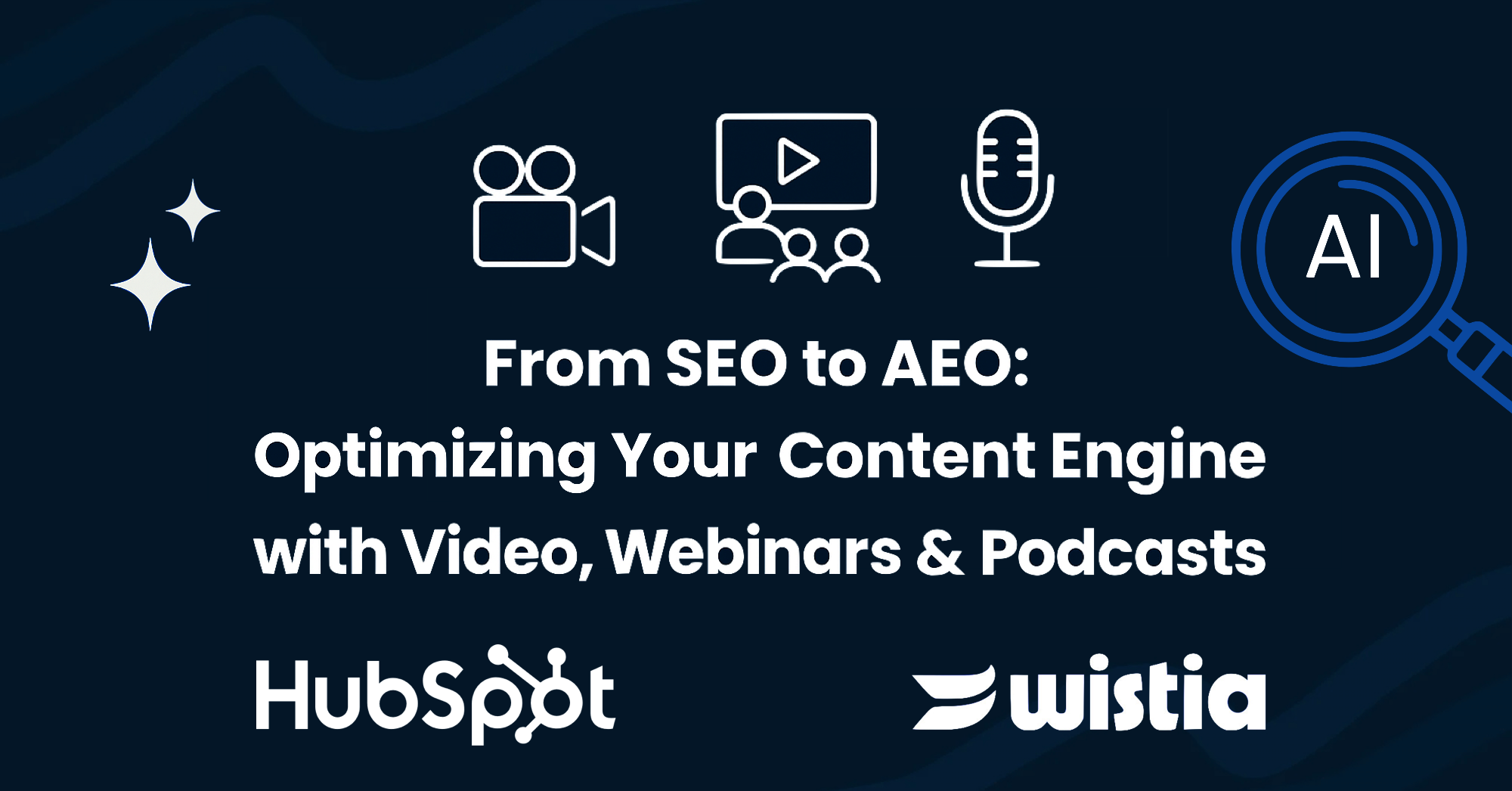Join Aaron Oberdick and Corey Christian of Nextiny Marketing for an overview of the video pre-production process. We will go into detail on video concepts for your marketing, sales, and customer service efforts; how to expand and formalize these concepts; and the equipment you will need to start organizing to produce your content.
Why Video?
The play button is the most compelling call-to-action on the web. When you see it, you want to click on it and watch the content. Adding video to your marketing and sales efforts is going to help bring up engagement and entice viewers to check out more of your content. If you have videos on your website and you have engaging content, people are going to continue to watch.
According to The State of Video Marketing in 2021, video gets 5 times the engagement over images and 4.5 times the engagement over link posts on social media. Consumers are watching videos more than ever before at an average of 2.5 hours a day.
We are also seeing trends in how businesses are turning toward video for more of their marketing. According to Wyzowl’s State of Video Marketing Survey 2021, the number of businesses using video as a marketing tool has increased by 41% since 2016. From the same survey, 93% of marketers who use video say that it’s an important part of their marketing strategy.
The biggest trend that we saw was the increase in webinar usage. In 2020, only 46% of marketers were using webinars, but in 2021 this rose to 62%.
Video Marketing Concepts
If you are new to starting video marketing and don’t know where to start, we’ve got you covered! We’ve created a list of 100+ videos that you can use to help start your video marketing efforts. This includes videos for your website pages, marketing and sales efforts, internal communication/HR, social promotions and SEO, and brand affinity and long-term strategies.
However, with all these video ideas it can be overwhelming to figure out where to start. Let’s take a look at five key videos that you should start with.
1. How to Create a Home Page Marketing Video
A homepage marketing video is extremely important because it is the first experience your visitors will have with your brand. This is becoming a popular video option because it can connect personally with your potential clients, help you show off your team, and help create your “brand voice.”
The Dos and Don’ts of a Homepage Video:
Dos:
- Make your Value Proposition clear
- Know your audience
- Test out Autoplaying video
- Put your video front and clear
Don’ts:
- Set broad goals
- Get too detailed
- Sacrifice good copy
2. How to Create an Email Signature Video
Adding a video to your email signature sets you apart from others. It’s a great way to make a personal introduction before a meeting. Make sure that you provide clear contact information and role transparency. Creating these videos is also a great way to show off your amazing team!
The Dos and Don’ts of an Email Signature Video:
Dos:
- Keep it short and sweet
- Mention something personal or relatable about yourself
- Include the preferred method to contact you
- Add a calendar link to connect with you
Don’ts:
- Fill it with too much content
- Read from a paper (keep it as organic as possible)
- Make it too lengthy (we tend to stick to the 00:30 mark)
3. How to Create a Sales FAQ Video
If your sales team gets a lot of questions, perhaps creating a sales FAQ video can help. This can remove friction from the sales process, and create validity and transparency with a potential lead. This video also provides helpful information to assist the lead in making a decision.
The Dos and Don’ts of a Sales FAQ Video:
Dos:
- Keep your buyer personas in mind
- Keep the information succinct
- Invite the viewer to contact you for additional information or to discuss their needs further
Don’ts:
- Divulge everything
- Get too specific
4. How to Create a Product or Service Promotional Video
This type of video gives customers a firsthand look into your product or service and creates transparency. The video can showcase the ease of use, functionality, use cases, or more to help the buyer or client decide their next step.
The Dos and Don’ts of a Product Promotional Video:
Dos:
- Keep as close to your brand as possible
- Make additional versions to share on social media
- Be timely
- Choose the best style that fits the needs of the video (would an animated video work better to promote or explain your product?)
Don’ts:
- Make it too long - show only the key parts of the process or product
- Bring up the competitors
- Push the sale
5. How to Create a Testimonial Video
Customer testimonials let your customers do the talking to connect with potential leads. This type of video is a great way to authentically showcase your quality of service and communication with existing clients.
The Dos and Don’ts of a Testimonial Video:
Dos:
- Showcase real footage of your service or product being used by the client
- Use a singular case study (depending on the nature of your product/service)
- Ask the client to walk through their journey working with you to bring transparency to the entire process
Don’ts:
- Ask the client to say anything that wasn’t authentic to their experience
- Select a client who is uncomfortable on camera
- Forget to set expectations!
Video Pre-Production
The first step in the pre-production process is deciding what types of videos you’ll create. We’ve just discussed several different videos that you can create for your business; however, there are different videos for different parts of the flywheel. As we see in the image below, the flywheel consists of attracting, engaging, and delighting. Each stage represents a different part of the inbound marketing process, which means that different types of videos will pair well with the different stages.
Once you’ve decided what videos you will be creating, you need to decide what the end goal is for the audience. We recommend using SMART goals. SMART stands for specific, measurable, attainable, relevant, and timely. Using this method, you’ll know whether the time and effort going into the video is a good business decision.
If after looking at the SMART goals for the video you decide to move forward on the project, the next step is to create a video brief and outline. Creating this before you start filming your video is extremely important to make sure that you know exactly what kind of footage you need. Now it’s time to go shoot!
The Pillars of an At-Home Video Setup
Now we’re ready to start filming, but what if I don’t have a camera or microphone? Let’s take a look at some recommended products for cameras, microphones, lights, and framing to help you get started on your video projects.
Video Camera Options
The first option you have is to use the camera on your laptop. However, if you are looking for better quality or you're ready to make the first jump at buying a camera, our suggestion is to purchase a Logitech BRIO. There are many other options for webcam cameras so find one that can satisfy the requirements you have.
If you are looking to purchase a camera where you can go out and shoot video in the field but also use it as a webcam then this is where a mirrorless camera or DSLR is your best option. There are a lot more options for these cameras so again, find what camera will best fit your needs. The overall appeal to having one of these cameras is the wide range of options you have when it comes to video shoots instead of being limited to a laptop camera.
Audio Equipment
Audio is complementary to video so you want to make sure you have the highest quality recording you can. A great start is with a USB microphone. It’s very easy to utilize because you plug it straight into your computer and then you can select it as your audio source when recording.
The other audio option listed above pairs with mirrorless or DSLR cameras. A shotgun microphone will plug directly into your camera and give an overall better sound when recording. However, if you are recording someone talking then a lavalier microphone may be a better fit. These microphones can clip directly onto someone's shirt and can be wired or wireless.
Lighting
Lighting is crucial to creating good video recordings. You don’t want to have your video subject covered in shadows or a silhouette. If you are looking to purchase lighting equipment, we suggest buying some LED panel lights. You have several options for these including battery or plug-in power, and the size. Typically you can find some cheaper options on Amazon for $20-$40.
You can also utilize natural lighting such as windows. For example, you never want your only light source (window) to be behind you or you’ll be a silhouette. Make sure that you have a window in front of you and that it lights your entire face. If not, bring in a lamp to fill in the shadows.
Framing
Our last pillar to discuss is framing. Making sure you frame your video properly can increase how professional it looks. First, make sure that the background is clean and doesn’t have any distracting or not relevant items. You also want to make sure your camera is at eye level so that it’s comfortable for your audience to watch you speak. You don’t want to have the “laptop look” where the speaker is almost looking down at the camera.
Join our Video HUG to learn about video marketing strategies. We will cover topics such as incorporating video into your marketing, sales, and customer service efforts, setting up your video studio, and getting your video and podcast series kicked off. Engage with us on the Video Marketing Study Group in the HubSpot Community.




-1-1.png)

